The history of abstraction has been firmly established, with the celebrated careers of modern masters like Kandinsky, Mondrian, Pollock, and Rothko widely recognized. These influential figures continue to inspire countless abstract painters even today. But who are the leading abstract masters of the contemporary era? In this blog, we are excited to present a thoughtfully curated and illustrated anthology of the 10 most famous abstract painters of today.
1. Gerhard Richter

Indeed, you guessed it right. At the top of our list is Gerhard Richter, born in 1932 in Dresden, Germany. And currently residing and working in Cologne, Germany. Although Richter may no longer be producing his iconic monumental abstract paintings. Which is known for their sensational style and the use of large squeegees instead of traditional brushes. The German artist remains active, continuing to paint on paper. His influence and relevance in the world of abstract painting and beyond remain as strong as ever.
Gerhard Richter is widely celebrated as one of the most significant artists of the 20th and 21st centuries. Consistently pushing the boundaries of both abstract and figurative painting. His extensive body of work includes photo-based paintings, glass pieces, and abstract compositions. All distinguished by their intricate layering of color and texture. Richter’s career has been a continuous exploration of the possibilities within the medium of painting, embracing an array of styles, techniques, and subjects. His retrospectives at the Tate Modern and the Museum of Modern Art have underscored his unmatched ability to probe the nature of image-making and the endless potential of paint.
2. Yayoi Kusama

Yayoi Kusama, born in 1929 in Matsumoto, Japan. And currently residing and working in Tokyo, is one of today’s most renowned artists. Her multidisciplinary practice is celebrated for its iconic use of polka dots and nets. Which she employs to explore themes of infinity and self-obliteration. From a young age, Kusama experienced vivid hallucinations that she later transformed into captivating abstract motifs within her art. These experiences deeply influenced her unique style, characterized by densely patterned, mesmerizing compositions.
Kusama’s signature use of polka dots and nets, particularly evident in her “Infinity Nets” series. Demonstrates her ability to fuse psychological depth with innovative abstract expression. These works, often monochromatic or limited in color, present a field of repetitive patterns. That draw viewers into Kusama’s immersive, infinite worlds. Beyond her famed infinity rooms and pumpkin sculptures. Her contributions to abstract painting are significant, earning her a prominent place in this discussion.
3. Heimo Zobernig
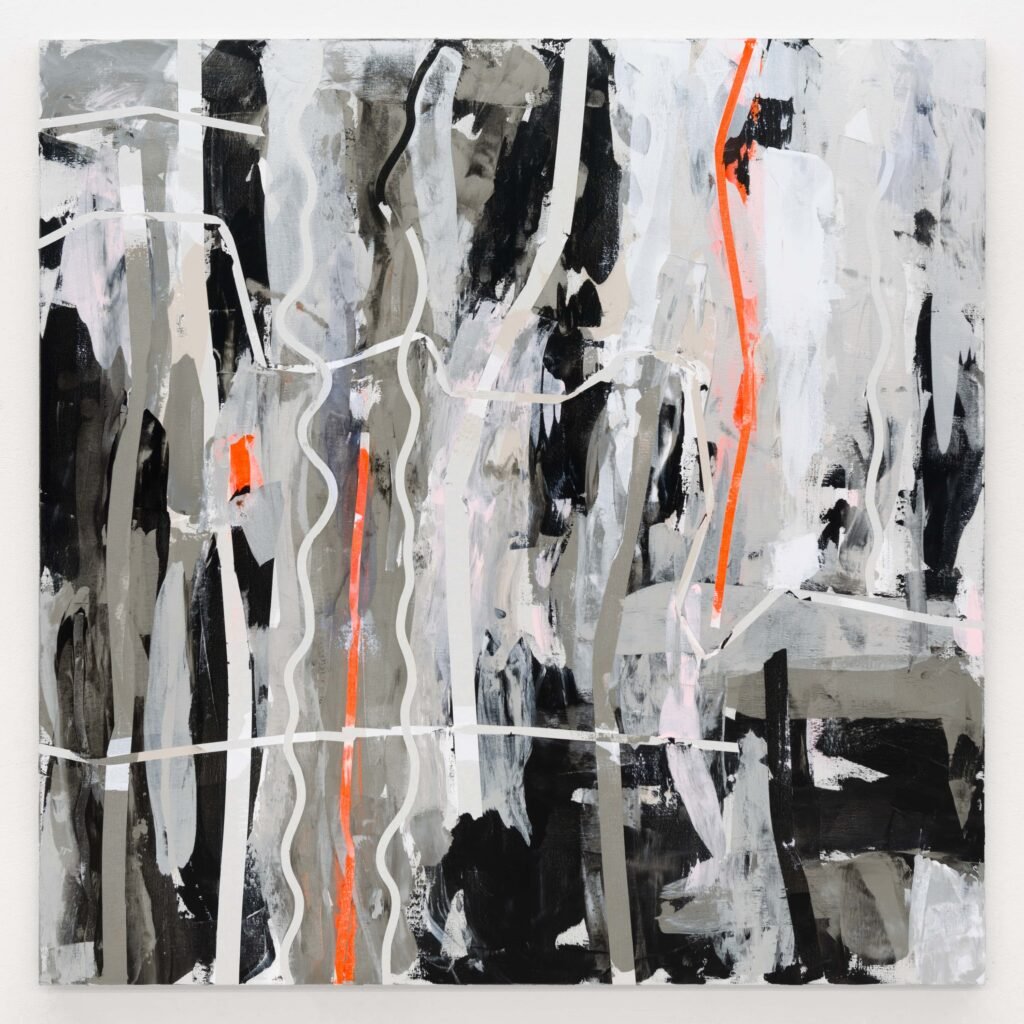
Born in 1958 in Mauthen, Austria, and currently living and working in Vienna. Heimo Zobernig’s work delves into the fundamentals of painting, sculpture, and design. Often employing minimalist and conceptual approaches. His abstract paintings are distinguished by their clarity, geometric shapes, and playful use of color.
Zobernig is renowned for his work with grids and monochromes. As well as his exploration of color theory. Engaging in art historical conversations with some of the greatest masters of abstract painting. His exhibitions at Tate St Ives and the Austrian Pavilion at the Venice Biennale highlight. His critical examination of artistic mediums and their boundaries.
Inspired ? Explore our curated bestseller abstract art prints for home & offices!
4. Ugo Rondinone

Ugo Rondinone, born in 1964 in Brunnen, Switzerland, and currently living and working in New York, USA, is an artist whose multifaceted practice encompasses painting, sculpture, and installation. His work often delves into themes of time, light, and the cyclical nature of life. Rondinone’s abstract paintings are distinguish by their meditative atmosphere, bold colors, unconventional shapes, and captivating gradients.
Using natural elements like clouds, rainbows, and light, he creates abstract works that balance serenity with melancholy. His exhibitions at the Rockbund Art Museum in Shanghai and the Bass Museum of Art in Miami showcase his poetic approach to abstract art.
5. Sean Scully

Sean Scully, born in 1945 in Dublin, Ireland, and currently working between New York, USA, and Munich, Germany, is celebrated for his richly layer paintings that explore emotional depth through color, pattern, and texture. His abstract compositions, marked by stripes and blocks of color, reflect a profound engagement with the material aspects of painting.
Scully’s palette combines earthy tones that resonate with the natural world and vibrant hues that inject energy into his work. His notable exhibitions at the Metropolitan Museum of Art and the National Gallery in London have solidified his reputation as a prominent figure in contemporary abstraction.
6. Damien Hirst
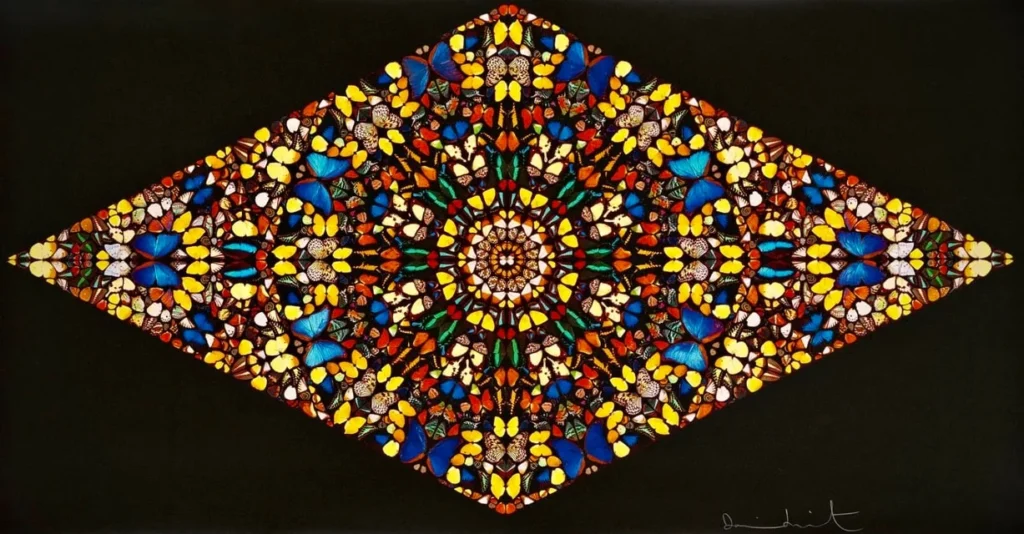
Born in 1965 in Bristol, UK, Damien Hirst splits his time between London and Devon. Known for being one of the most provocative figures in contemporary art, Hirst delves into themes of life, death, and the beyond through diverse mediums, including painting. His abstract works, often part of expansive conceptual projects, probe questions of biology, medicine, and mortality.
Hirst’s painting style has evolved significantly. His early spot paintings feature rows of randomly colored circles on white backgrounds, symbolizing pharmaceutical precision and the randomness of human existence. In contrast, his later series, like the butterfly paintings, use actual butterfly wings in intricate patterns, merging beauty with themes of mortality. His exhibitions at the Tate Modern and the Venice Biennale have ignited debates and attracted considerable attention.
7. Julie Mehretu

Born in 1970 in Addis Ababa, Ethiopia, and currently based in New York City, Julie Mehretu creates intricate, multi-dimensional paintings that delve into themes of geography, displacement, and social landscapes. Her work, known for its vibrant swirls of color and precise mark-making, examines the intersections of history and contemporary global issues.
Mehretu has often chosen not to explain the significance of the marks in her art, emphasizing instead the importance of the viewer’s emotional response to them. Her prominent exhibitions at the Whitney Museum of American Art and the Solomon R. Guggenheim Museum highlight her critical acclaim and influence both in the United States and internationally.
8. Katharina Grosse

Born in 1961 in Freiburg, Germany, Katharina Grosse now resides and works in Berlin. She is renown for her immersive, large-scale spray paintings that transform spaces into dynamic, colorful environments. Grosse’s work redefines traditional painting by extending beyond the canvas to encompass architectural spaces and natural settings.
Her exceptional canvas pieces are as notable as her site-specific interventions. Grosse’s exhibitions at the Venice Biennale and the Museum of Modern Art in New York highlight her groundbreaking approach to abstract painting, blending it with Installation Art, Land Art, and Performance Art.
9. Richard Tuttle

Born in 1941 in Rahway, New Jersey, and currently based in New Mexico, Richard Tuttle’s nuanced and intricate works push the boundaries between painting, sculpture, and drawing. Renowned for his minimalist style, Tuttle explores the spatial and aesthetic interplay of form and color through a diverse range of materials.
His innovative approach includes experimental assemblages on unconventional plywood surfaces, utilizing spray paint alongside materials such as foil, tape, crayon, wool, and wire. Tuttle’s influential career is highlighted by major exhibitions at the Whitney Museum of American Art and a retrospective at the San Francisco Museum of Modern Art, emphasizing his impact on the post-minimalist movement.
10. Theaster Gates

Born in 1973 in Chicago, where he continues to live and work, Theaster Gates pushes the limits of traditional art forms by delving into themes of urban renewal, community development, and social engagement. His artistic practice spans painting, pottery, sculpture, and performance.
Gates is known for his minimalist paintings that often incorporate unconventional materials, such as construction metals. He has gained acclaim for his transformative projects, like the Stony Island Arts Bank in Chicago, which reimagine spaces and objects with historical and cultural significance. His exhibitions at the Tate Modern and Documenta have cemented his status as a leading figure in contemporary and abstract art.
Loved what you read? Now bring the inspiration home — browse our exclusive art prints.

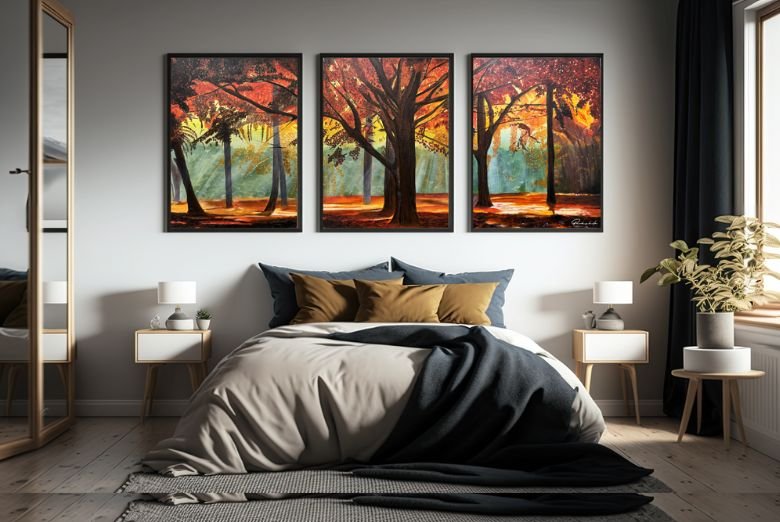
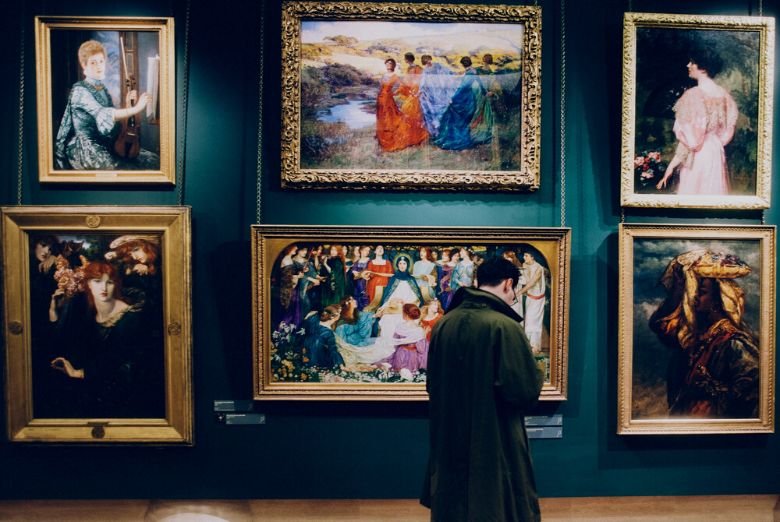
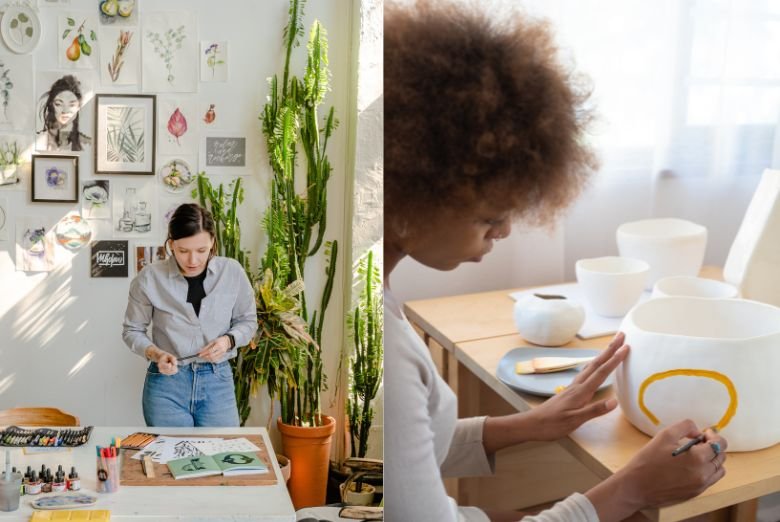
My sculptures are old but weird..I really dont know why l dont sell them cause im hoarding my own work. Im painting full time with limits on my abilty to paint more..i need a work space..what ever I create next well be better than what i am wirking on currently.
I would love to see your work. I need to market myself as well.
Mark Rothko. The rest are elementary.
I agree!
Not alive
Right on!
Yes. His genius tragically contributed to his depression. In his words, “I was always looking for something more”.
I fully agree. Rothko’s genius remains the most contemplative and inspirational of all the abstract painters.
I’ve not experienced an artist that has explored more with area & paint than DeKooning or Richter. And it’s very satisfying to rest within a Rothko.
Another name to add would be Mark Bradford. Also Cecilia Vicuna. Also just read a fascinating book on the subject of abstract art called Touching the Art by Mattilda Bernstein Sycamore, about her relationship with her late grandmother, Gladys Goldstein, an abstract artist from Baltimore,
Interesting line of work!
First abstract work was by a woman. Also, Madam Blavatsky was the leading inspiration for Mondrian, Kandinsky and others. Don’t forget, that the female archetype, the muses, are the guides to the spirit of art.
I agree !
Abstract art of any type should tweak the mind of the observer. That’s not happening here. Why is this so? A person looking at art of any type feels a sense of awe and emotional strain. Why? Because the artist communicates a connection, as if signals were crossed. Eliciting a telepathic communion between seer and canvas. To say these are top 10 abstract artist seems somewhat misleading. As the story goes it’s all in the eyes of the beholder.
Yes…you are right. Nothing in these paintings sparks a sensation or feeling in me.
Agreed that art should evoke an emotional response, which means there should be multiple viewers impacted by the work. If only the rich and famous buy the work for their collections, often done by those who were well known before producing artwork and who had large sums to invest in promotion of their work one might question the validity of their artistic abilities. On the other hand there are many unknown artists producing very moving pieces to be enjoyed by the average person. So who really decides who the exceptional artists are?
Agreed.
This list does not inspire.
I think you missed the mark by a mile.
Very well said…
I believe Willem de Kooning was the most impactful abstract artist of our time!
I think Tracy Emin is.
Most significant is Anselm Kiefer. Also Cecily Brown, and Larry Poons. Rashid Johnson most certainly. I at first saw the spray painted drapes of Katarina Grosse and thought, Sam Gilliam.. but he passed.
Mmmm
Dear Commenter,
Your succinct yet profound utterance, “mmmm,” under the article about abstract art, is a fascinating subject for analysis. This seemingly simple expression encapsulates a myriad of potential interpretations and emotional resonances. Allow me to delve into the depths of its possible meanings.
The comment “mmmm,” though seemingly simple, carries a depth of meaning that warrants thorough exploration. This brief utterance, composed of a single repeated consonant, encapsulates a range of potential interpretations and emotional resonances, particularly in the context of abstract art. By examining the layers of meaning embedded within this expression, we can uncover its significance as a reflection of the viewer’s engagement with the artwork.
Firstly, the repetition of the letter “m” suggests a prolonged moment of contemplation. Unlike a quick, dismissive comment, “mmmm” implies that the viewer is taking their time to absorb and reflect upon the artwork. This extended sound can be likened to the act of savoring a complex flavor, indicating a deep and thoughtful engagement with the piece. The viewer is not merely glancing at the art but allowing its abstract forms and colors to permeate their consciousness, leading to a richer, more nuanced appreciation.
Moreover, “mmmm” is often associated with the experience of pleasure or satisfaction. In this context, it could signify that the abstract art has elicited a sensory response from the viewer. Abstract art, with its emphasis on form, color, and texture, often evokes visceral reactions that transcend verbal description. The comment “mmmm” might capture this ineffable quality, suggesting that the artwork has touched the viewer on a sensory level, evoking memories, emotions, or a physical reaction that words cannot fully convey.
Abstract art thrives on ambiguity, and the comment “mmmm” mirrors this quality. The lack of specificity in the comment leaves ample room for interpretation, much like the art itself. This ambiguity invites others to project their own thoughts and feelings onto the response, creating a shared space of mystery and wonder. In this way, “mmmm” becomes a participatory act, engaging other viewers in a collective exploration of meaning.
On a deeper level, “mmmm” can be seen as a form of philosophical inquiry. It suggests a pondering of the nature of art, beauty, and meaning. The viewer might be questioning the boundaries of artistic expression or reflecting on the subjective nature of aesthetic experience. This simple comment opens the door to profound questions, inviting a deeper contemplation of the artwork and its impact.
The use of “mmmm” might also be influenced by cultural factors. In some cultures, such sounds are used to express agreement, understanding, or contemplation. The comment could be a nod to these cultural nuances, adding another layer of complexity to its interpretation. It highlights how a single expression can carry different connotations depending on the cultural context in which it is used.
In conclusion, the comment “mmmm” is a rich tapestry of potential meanings, each thread contributing to the overall texture of the conversation about abstract art. It is a testament to the power of brevity and the depth of human expression. This enigmatic and thought-provoking response encapsulates the viewer’s engagement with the artwork, inviting others to join in the exploration of its many layers.
Are you both Jeff and Mich?
Very clever response to one viewers imbecilic utterance. You used the language of over the top art reviews to deftly make fun of a sound emanating from one observers throat. Brilliant. Or perhaps you’re dead serious. Either way you gave us all something fun to read. I’m still laughing!
Right on, mate!
Nice use of AI. Almost funny.
Nice. Interesting. Love it.
I’m an artist myself, and I would like to have seen more women in this group.
I agree!
For me abstract art demands that the artist suspend objective skill, it’s essential form is to delve into and to bring forward the deepest consciousness. Each minute approach to the canvas challenges the artist to both sensible and non-sensical which frustrates the emotions causing friction to form and intelligence. The friction produces and freedom feels like a bottomless morass of concentrated colors and intelligence that artist has to navigate while the friction always remains.
Mmmm…
I dabble as a painter but I’m an Attorney and Writer instead of having the guts to what I love – Paint. So, I buy. Some say invest. Perhaps. But of those represented, I was sadly disappointed. It, to me, was a waste of space and time. I recently bought a Jackson Pollack and would easily buy more than consider any of those represented above. I was a friend of Georgia O’Keefe. I think she would lean towards my opinion.
I am an artist too, a female artist, and only 2 women made this list?
Take a look at Frank Ditta.(www.dittaabstracts.com).
We bought his painting and love it. No one doing what he is. Thank you.
Greg
It apears Frank is journeying for a discovery of the art he may wish to make. On the road to find out.
What difference does it make whether the artist is female or male.
Some of it looks like what we did as children in 3rd grade and the rest like paint by numbers or traces then colored prints.
Wo, Ramona that you cannot feel the shapes and colors is so sad.
I agree,I do abstract and you can see so MUCH in it but you have to understand abstract
Larry Poons
Omg! Feminism here too!??
It belongs everywhere!
It’s three women not two, but still a bit disproportionate.
Two girls, so wat…. Stop, don’t bring ur feminists to art…. But u gave me a nice outlet
Thanks for putting this type of art out there. I’m a homebound abstract artist and appreciate getting to see this.
Two women out of ten? Someone didn’t do their homework! Any thorough investigation will reveal at least half of today’s abstract masters are women.
Agreed!! This list is boy crazy. All great work but ,not representative.
https://www.artsy.net/article/artsy-editorial-10-women-abstract-artists-rise
I am a figurative artist painting women . Painting feelings passions emotions . Long live figurative artist s.
Impressive group of works. Happy to see art is still flourishing!!!
2 women out of 10???!!!
Why is that?
You are correct they think girls are not strong but they will see our power
Thanks for your comment. Nothing against anybody! Would love to add more people to the list, do suggest us.
How about Ann Purcell?